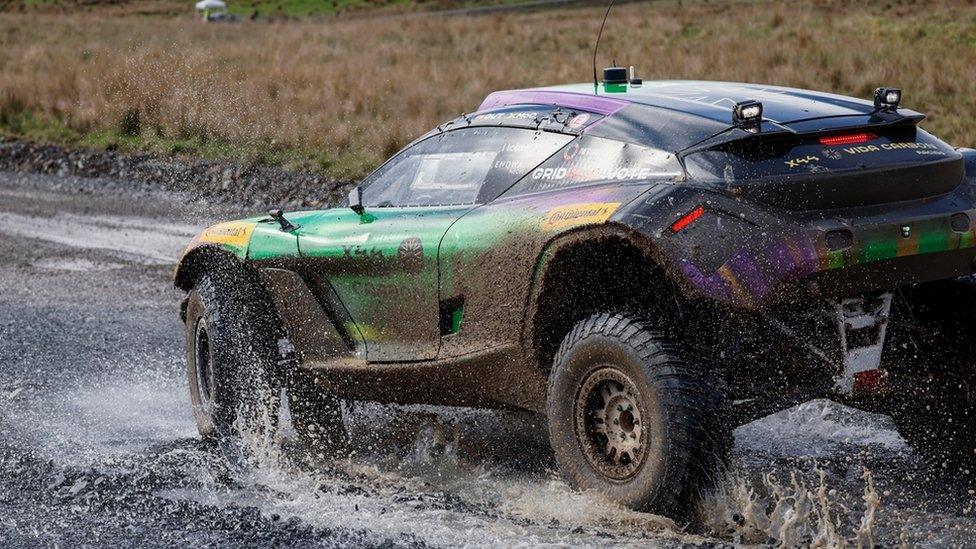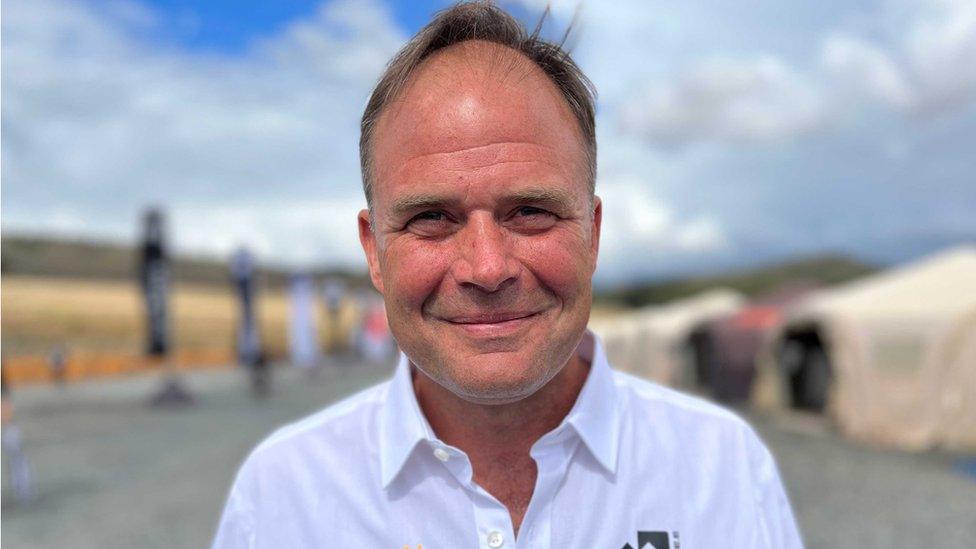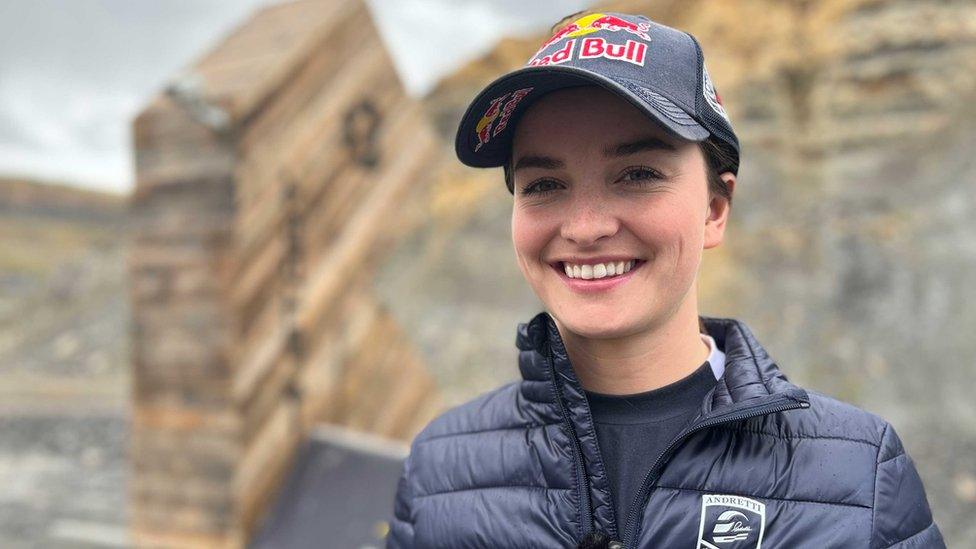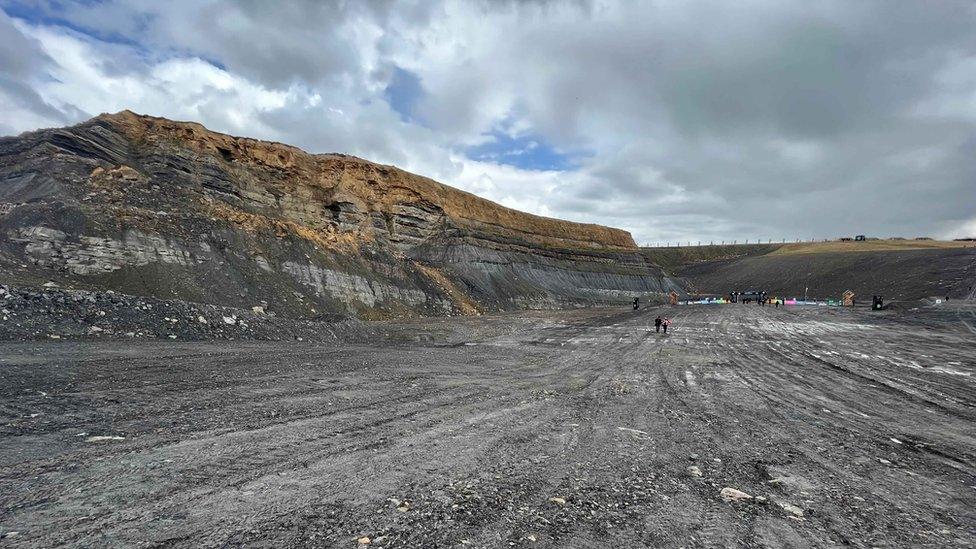Extreme E bids to make motor racing eco-friendly
- Published
Dumfriesshire to host electric vehicle motorsport event
It has all the thrills and spills of extreme off-road racing but with none of the tailpipe emission.
The Extreme E Championship, being staged this weekend in Dumfriesshire, is raced in twin-motor SUVs.
The event is carbon neutral - contrasting with Formula One, which generates 250,000 tonnes of CO2 annually.
But the races are short, taking about 12 minutes to complete four laps.
To highlight the green credentials, the Scottish leg is being run in an old opencast coal mine near Sanquhar which has plans to become a pumped storage hydro power scheme.

It's the third season of the event, which has previously taken place in the Saudi Arabian desert and Greenland.
A tented village houses race officials, teams and broadcast facilities - but there are no spectators to further reduce the carbon footprint.
Instead the event relies on television rights. Organisers say it reaches 90 million people on TV across the world, with a further 44 million watching online.
The cars are charged from a generator run on green hydrogen and are transported by ship rather than air freight.
Ten teams compete across the weekend. All are gender balanced, with one male and one female driver.
Scottish weather 'only challenge'

Co-founder Ali Russell says he is proud to stage the event in Scotland
Co-founder Ali Russell, from Edinburgh, says the core values are the environment, equality and diversity.
He said: "I couldn't be prouder having an Extreme E race in Scotland.
"The only challenge we've got is the Scottish weather.
"Manufacturers all develop their technology and use it in the development of new cars. The cars you see on the road are better through racing."
Catie Munnings will be the sole British competitor as she teams up with Sweden's Timmy Hansen for the Andretti Altawkilat Extreme E team.

The 25-year-old told BBC Scotland: "This is a really different landscape for us to be racing in.
"We've never raced on a surface like this before so it's going to be interesting.
"Because it's a new championship they have the opportunity to develop it from the ground up and pioneer those techniques in cutting the carbon footprint."
Sitting in the Buccleuch estate, Glenmuckloch was initially a deep mine before becoming open-cast, with the last coal extracted from the site in 2018.
The course is approximately 2.7km long and the drivers swap over in the pit lane after just two laps.


Glenmuckloch was an open-cast coal mine
A series of heats will be staged and the final takes place on Sunday afternoon.
School groups have been visiting the site during the week and organisers have been investing in nature restoration projects on the River Nith.
Anna Fergusson, estate director at Buccleuch Estates, said: "I think the guys had been looking for a place in Scotland for about the last two years.
"They are really engaging with all the local communities and supporting local suppliers and it's just been pretty exciting to watch it build."
Once the Scottish leg is completed the season will continue with races in Sardinia and the Chile desert.
Related topics
- Published30 March 2023
